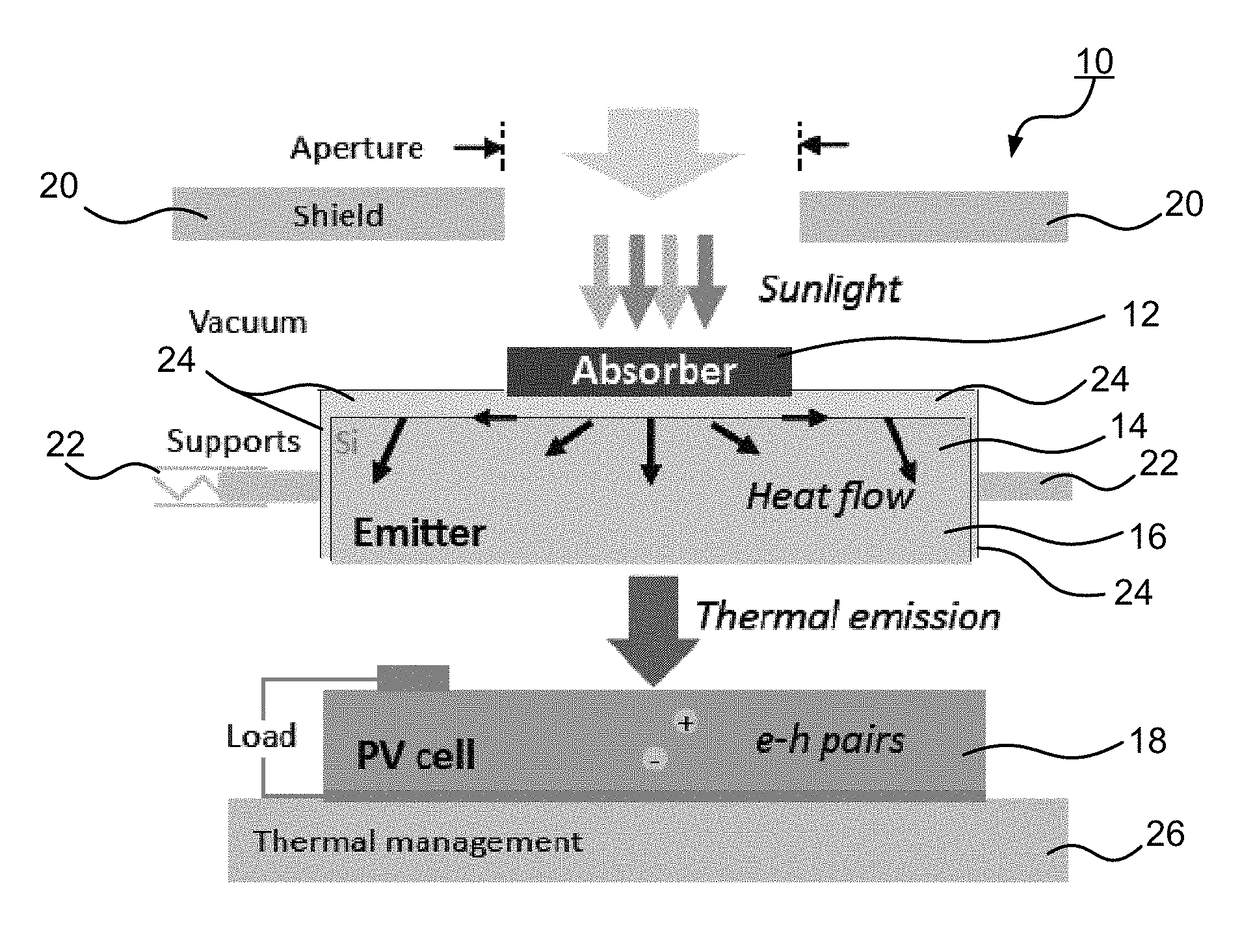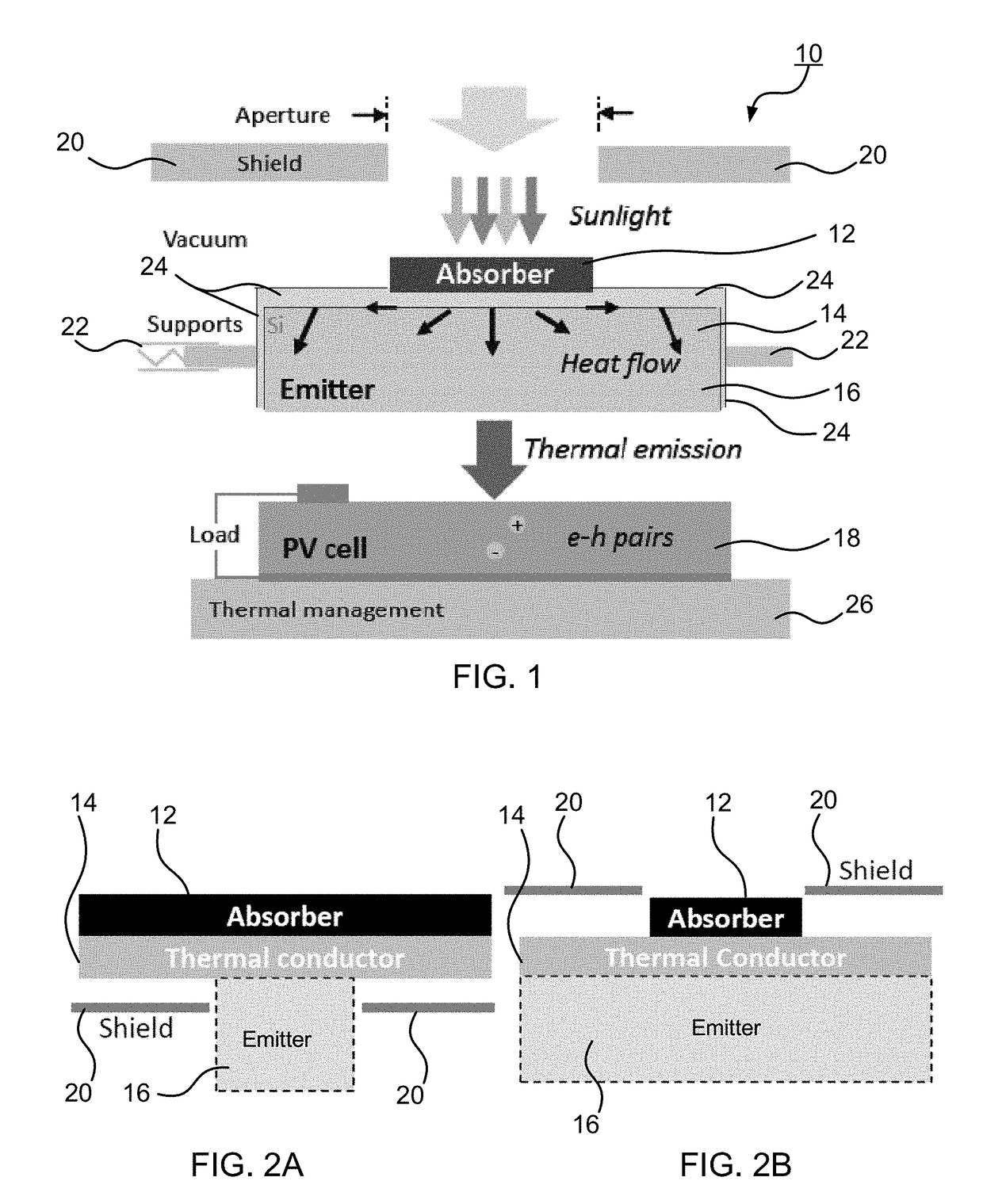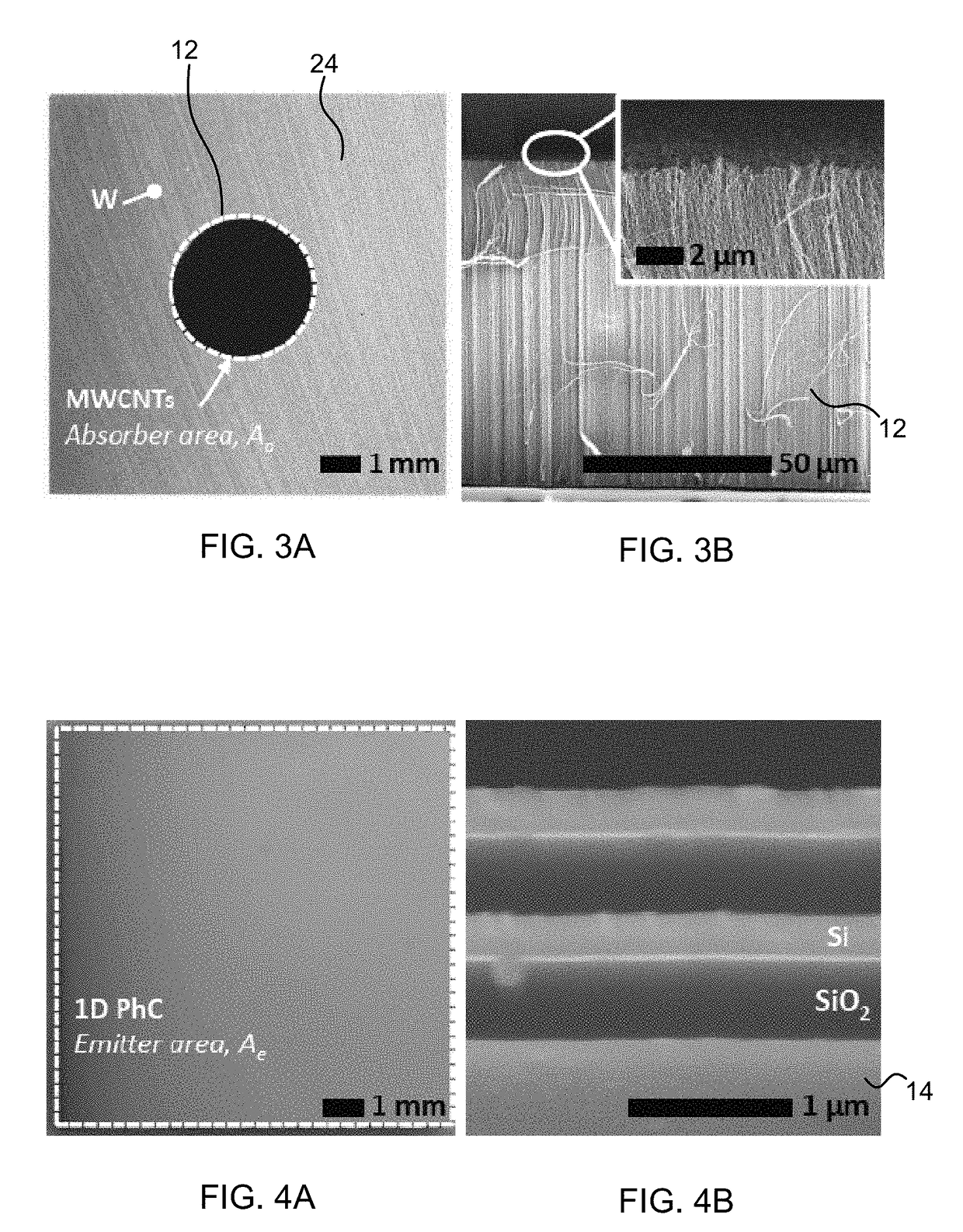Spectrally-engineered solar thermal photovoltaic devices
a solar thermal and photovoltaic technology, applied in the field of solar thermal photovoltaic devices, can solve the problems of spectral control and the difficulty of efficient sunlight collection, and achieve the effects of reducing parasitic radiation, reducing heat conducted away and lost, and lowering operating temperatures
- Summary
- Abstract
- Description
- Claims
- Application Information
AI Technical Summary
Benefits of technology
Problems solved by technology
Method used
Image
Examples
example 1
[0027]As shown in FIG. 5, the output power of the PV cell displays an exponential behavior as Planck's distribution shifts to higher energies with increasing emitter temperature. These experimental results are supported by a spectral quasi-1D diffuse radiative network model (SQ1DD). The model assumes isothermal operation of the absorber-emitter module (i.e., Ta=Te=Tae) and accounts for the experimentally measured spectral properties of the components (e.g., ϵλ, IQE) and the geometrical configuration of the planar solar thermal photovoltaic device. The results of the thermal PV experiment serve as a validation of the model and provide an indirect method for determining the temperature of the absorber-emitter module from the measured output power. This approach was used in the solar thermal photovoltaic device characterization since a direct in-situ measurement of the absorber-emitter module temperature with minimal impact on the efficiency was challenging.
example 2
[0028]The full energy conversion processes were investigated in the solar thermal photovoltaic device with increasing emitter-to-absorber area ratios. FIG. 6A shows the electrical output power of the solar thermal photovoltaic devices as a function of irradiance (Hs) and the absorber-emitter temperature (determined using the relation between pout and Tae shown in FIG. 5) for various emitter-to-absorber area ratios. In FIGS. 6A-D, the markers shown are experimental points (errors bars represent 95% confidence interval), and the solid bands represent the SQ1DD model. The upper and lower estimates of the SQ1DD model associated with treating Hs as collimated or diffuse, respectively, bound the data within the experimental uncertainty. In FIG. 6A, the effect of increasing AR is manifested in shifting the operating points to a regime of increased irradiance (Hs) relative to the thermal re-emission loss (σTae4). If the absorber solar collection efficiency is considered (a major component o...
PUM
 Login to View More
Login to View More Abstract
Description
Claims
Application Information
 Login to View More
Login to View More - R&D
- Intellectual Property
- Life Sciences
- Materials
- Tech Scout
- Unparalleled Data Quality
- Higher Quality Content
- 60% Fewer Hallucinations
Browse by: Latest US Patents, China's latest patents, Technical Efficacy Thesaurus, Application Domain, Technology Topic, Popular Technical Reports.
© 2025 PatSnap. All rights reserved.Legal|Privacy policy|Modern Slavery Act Transparency Statement|Sitemap|About US| Contact US: help@patsnap.com



